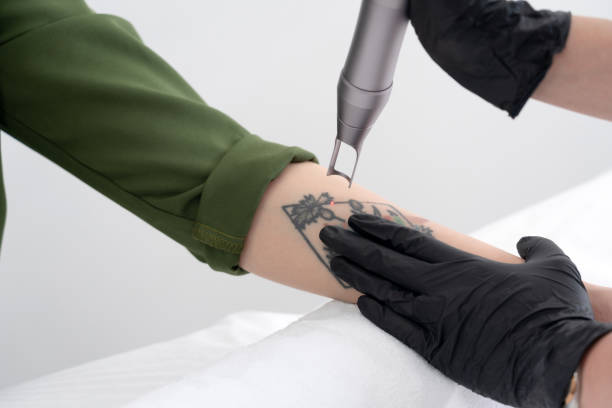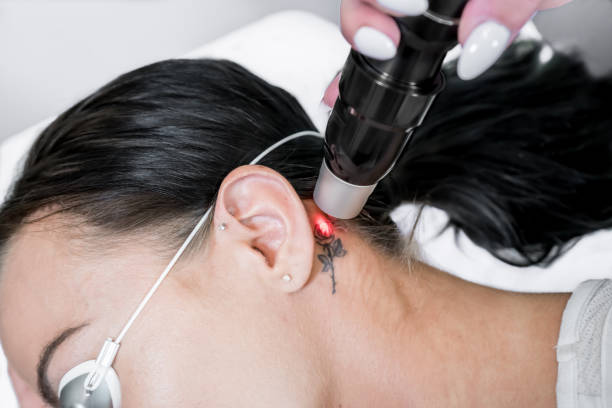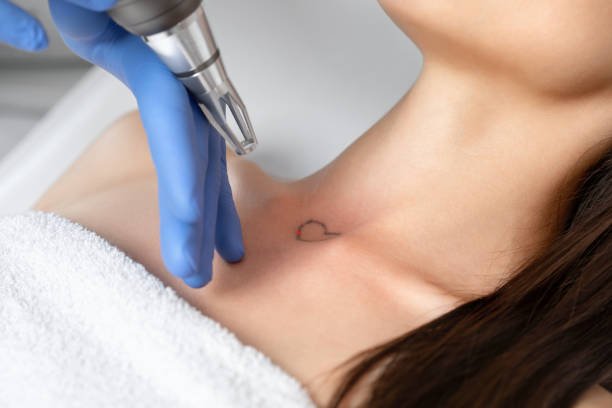Are you ready to bid farewell to that tattoo you once loved but now regret? Well, you’re in luck! Tattoo removal has become an increasingly popular solution for those seeking a fresh start. Whether it’s a change in taste, a desire to erase the past, or simply wanting a blank canvas for new ink, there are various methods available to help you achieve your desired result.
In this blog post, we’ll dive into the world of tattoo removal and explore everything from how it works to what to expect during the healing process. So sit back, relax and get ready to discover all there is to know about tattoo removal!
Common Reasons for Tattoo Removal
Tattoos have become increasingly popular over the years, with people using them as a form of self-expression and art. However, there are times when individuals may regret their decision to get inked and seek tattoo removal. Let’s explore some common reasons why people opt for tattoo removal.
- Change in Personal Taste: One common reason for getting a tattoo removed is simply a change in personal taste or style. What might have seemed cool and trendy at one point in time may no longer hold the same appeal.
- Career Advancement: In certain professions, visible tattoos can hinder career advancement or job opportunities. This prompts individuals to consider removing their tattoos to enhance their professional prospects.
- Relationship Changes: Tattoos that were once symbols of love or commitment may lose meaning when relationships end or evolve. Many people choose to remove these reminders of past relationships as they move forward in life.
- Poorly Executed Tattoos: Sometimes, individuals end up with poorly executed tattoos due to inexperienced artists or errors during the process itself. These subpar results can be unsightly and lead to dissatisfaction, prompting a desire for removal.
- Faded or Aging Ink: Over time, tattoos naturally fade and blur due to exposure to sunlight and aging skin elasticity changes. This can make the design less visually appealing than it was initially, motivating individuals to pursue removal options.
Important Read: Fade the Past, Embrace the Future: Experience Effective Tattoo Removal in Kolkata
It’s important to remember that each person’s journey towards tattoo removal is unique and deeply personal. Whether driven by changing preferences, professional considerations, relationship dynamics, quality concerns, or aesthetic factors – everyone has their own story behind seeking tattoo removal services.

Different Methods of Tattoo Removal
When it comes to tattoo removal, there are several methods available, each with its own pros and cons. Let’s explore some of the different methods you can consider if you’re looking to remove a tattoo.
- Laser Tattoo Removal: This is one of the most popular and effective methods for removing tattoos. It involves using high-intensity laser beams to break down the ink particles in your skin, allowing your body’s natural processes to flush them out gradually.
- Surgical Excision: In certain cases, surgical excision may be recommended. This method involves cutting out the tattooed skin and stitching up the area. While it offers immediate results, it may leave behind scars or require multiple sessions depending on the size of the tattoo.
- Dermabrasion: This method involves sanding off the top layers of your skin using a rotating brush or diamond wheel device. It can effectively lighten tattoos but may not completely remove them.
- Chemical Peel: Chemical peels use acid solutions to remove layers of skin gradually over time, including those containing tattoo pigments. However, this method is best suited for small tattoos and may require multiple sessions.
- Cryosurgery: Cryosurgery uses extreme cold temperatures (liquid nitrogen) to freeze and destroy tattooed skin cells before they are removed by your body’s natural healing processes.
These are just a few examples of the different methods available for tattoo removal today that offer varying degrees of success depending on factors such as ink color, depth, size, and location.
So before choosing a particular method, Consult with an experienced dermatologist or specialist who can assess your specific situation and recommend which technique would be most suitable for you.
It’s essential to weigh all options carefully and make an informed decision based on what aligns with your goals and concerns when it comes to removing unwanted tattoos.
How Does Laser Tattoo Removal Work?
Laser tattoo removal is a highly effective and popular method for getting rid of unwanted tattoos. But how does it actually work? Let’s delve into the process.
During laser tattoo removal, high-intensity beams of light are directed onto the tattooed area. The pigment in the tattoo absorbs this light, causing it to break down into smaller particles. These particles are then gradually eliminated by the body’s immune system.
The type of laser used depends on the colors present in the tattoo. Different lasers target specific pigments, ensuring optimal results. For example, green and blue pigments can be effectively treated with an Nd:YAG laser, while red and orange pigments respond well to a Q-switched ruby or alexandrite laser.
Multiple sessions are usually required for complete removal, as tattoos vary in size, color density, and depth. Each session is spaced several weeks apart to allow sufficient healing time.
It is worth noting that laser tattoo removal can cause some discomfort during treatment. Many clinics offer numbing creams or local anesthesia to minimize any pain experienced by clients.
Although laser tattoo removal may require multiple sessions and some patience from clients, it offers a safe and effective method for removing unwanted tattoos without leaving behind significant scarring or damage to the surrounding skin.
Process of Tattoo Removal
The process of tattoo removal involves several steps to effectively fade or completely remove unwanted tattoos. One common method is laser tattoo removal, which uses high-intensity light beams to break down the ink particles in the skin.
During a laser session, the technician will first clean and numb the area being treated. Then, they will pass a handheld device emitting powerful bursts of light over the tattooed area. The energy from the laser breaks down the ink into tiny fragments that can be naturally eliminated by your body’s immune system.
Multiple sessions are usually required for complete tattoo removal, as each treatment only targets a portion of the ink. The number of sessions needed depends on various factors such as tattoo size, colors used, and individual skin characteristics.
After each session, you may experience some discomfort and redness in the treated area. It’s important to follow post-treatment care instructions provided by your technician to promote proper healing and minimize any potential side effects.
Over time, with regular treatments spaced several weeks apart, you should see gradual fading of your tattoo until it becomes significantly lighter or even disappears entirely. Patience is key during this process as complete removal can take months or even years depending on individual circumstances.
Remember that every person’s response to tattoo removal can vary based on their unique situation. Consulting with an experienced professional at a reputable tattoo removal clinic like Image Clinic in Kolkata will ensure you receive personalized advice tailored to your specific needs.
Healing and Scarring: What to Expect
Healing and scarring are important aspects to consider when undergoing tattoo removal. After the laser treatment, your skin will need time to heal and regenerate. It is normal for the area to feel tender, swollen, or even blistered immediately after the procedure. However, these side effects usually subside within a few days.
During the healing process, it is essential to follow proper aftercare instructions provided by your tattoo removal clinic. This may include keeping the treated area clean and dry, avoiding exposure to direct sunlight or extreme temperatures, and refraining from picking at any scabs that may form.
Scarring is a potential risk with any type of skin treatment including laser tattoo removal. However, advancements in technology have greatly minimized this risk. In most cases, the laser targets only the pigment of the tattoo without causing significant damage to surrounding tissues.
It’s important to note that individual factors such as skin type and color can influence how your body responds to tattoo removal and whether scarring occurs. Additionally, following proper aftercare instructions can help minimize scarring.
If you do experience any scarring or changes in pigmentation after completing your tattoo removal sessions, consult with your dermatologist or a skilled professional at a reputable clinic like Image Clinic in Kolkata for further advice on scar management techniques such as topical creams or silicone sheets.
Though, the majority of individuals who undergo laser tattoo removal notice minimal scarring if any at all once their skin has fully healed
Important Read: The Complete Guide to Tattoo Removal: Your Questions Answered
Tips for a Successful and Safe Tattoo Removal Experience
- Research and choose the right tattoo removal clinic: Start by doing some thorough research to find a reputable tattoo removal clinic in your area. Look for clinics that specialize in laser treatment, as this is considered the most effective method of removing tattoos. Check online reviews, ask for recommendations from friends or family, and visit different clinics to get a feel for their expertise and facilities.
- Consultation with a qualified professional: Once you’ve found a potential clinic, schedule a consultation with one of their experienced professionals. During this initial meeting, they will assess your tattoo and skin type to determine the best course of action for your specific needs. They’ll also discuss any potential risks or side effects associated with the procedure.
- Follow pre-treatment instructions: Prior to each session, make sure to follow any pre-treatment instructions provided by your tattoo removal specialist. This may include avoiding sun exposure, shaving the area being treated, or applying numbing cream.
- Be prepared for multiple sessions: Removing tattoos is not an overnight process; it takes time and multiple sessions to achieve desired results. Each session typically lasts around 15-30 minutes depending on the size of your tattoo.
- Adhere strictly to aftercare instructions: After each session, you’ll be given specific aftercare instructions by your tattoo removal specialist. This may involve keeping the treated area clean, dry, and protected from sunlight until it fully heals. The use of healing ointments or bandages might also be recommended. Avoid picking at scabs or exposing the area to excessive heat or friction during this healing phase.
- Be patient: Tattoo removal requires patience. Results are not immediate, and it may take several months before you see significant fading. It’s important not to rush the process. Rushing can lead to complications such as scarring. Take photos along every step of progress so that you can track changes over time. Never hesitate reaching out to your specialist if you have any concerns or questions.

FAQs About Tattoo Removal
1. Is laser tattoo removal painful?
While everyone has a different pain threshold, most individuals describe the sensation as similar to getting a tattoo, but with less discomfort. The level of pain also depends on factors such as the size, color, and location of the tattoo.
2. How many sessions will it take to remove my tattoo completely?
The number of sessions required for complete removal varies from person to person based on various factors like ink density, skin type, and overall health. On average, it can take anywhere between 5-12 sessions spaced several weeks apart.
3. Will laser tattoo removal leave scars?
Laser technology has advanced significantly over the years, reducing scarring risks considerably when performed by an experienced professional using modern equipment. However, there is always a minimal risk of scarring depending on individual healing abilities.
4. Can all colors be removed with laser treatment?
Laser technology is highly effective in removing dark-colored tattoos like black or blue ink; however, lighter colors such as yellow or green may require additional treatments or alternative methods like combination therapy.
5. Are there any side effects associated with laser tattoo removal?
Temporary side effects include redness, swelling, itching or blistering at the treated site immediately after each session – these usually subside within a few days without any intervention.
Conclusion – Laser Tattoo Removal
Tattoo removal is a common practice nowadays, with more and more people opting to remove their unwanted tattoos. Whether it’s because of a change in personal taste, career opportunities, or simply wanting a fresh start, there are various reasons why individuals choose to undergo tattoo removal.
When it comes to removing tattoos, laser tattoo removal is considered one of the most effective methods available. It utilizes advanced laser technology to break down the ink pigments in your skin gradually. The process may take several sessions depending on factors such as tattoo size, color complexity, and individual response.
During the healing process after each session, it’s essential to follow proper aftercare instructions provided by your tattoo removal clinic. This will help minimize any potential scarring and promote optimal healing results.
If you’re considering getting your tattoo removed, it’s crucial to do thorough research and choose a reputable clinic like Image Clinic in Kolkata that specializes in tattoo removal. Their experienced professionals can guide you through every step of the process and ensure your safety.
If you have an unwanted tattoo that you wish to remove safely and effectively without significant scarring or complications, consider laser tattoo removal at Image Clinic – the best choice for professional care and outstanding results! Don’t let your past decisions hold you back; embrace a future free from unwanted tattoos!
So why wait? Take control of your appearance today with laser tattoo removal at Image Clinic!


